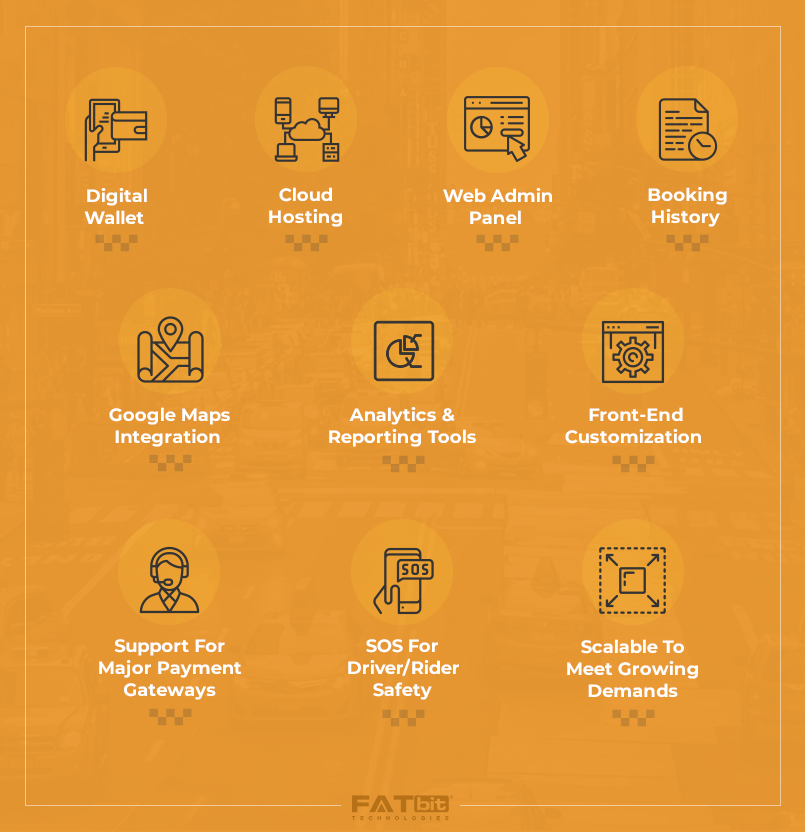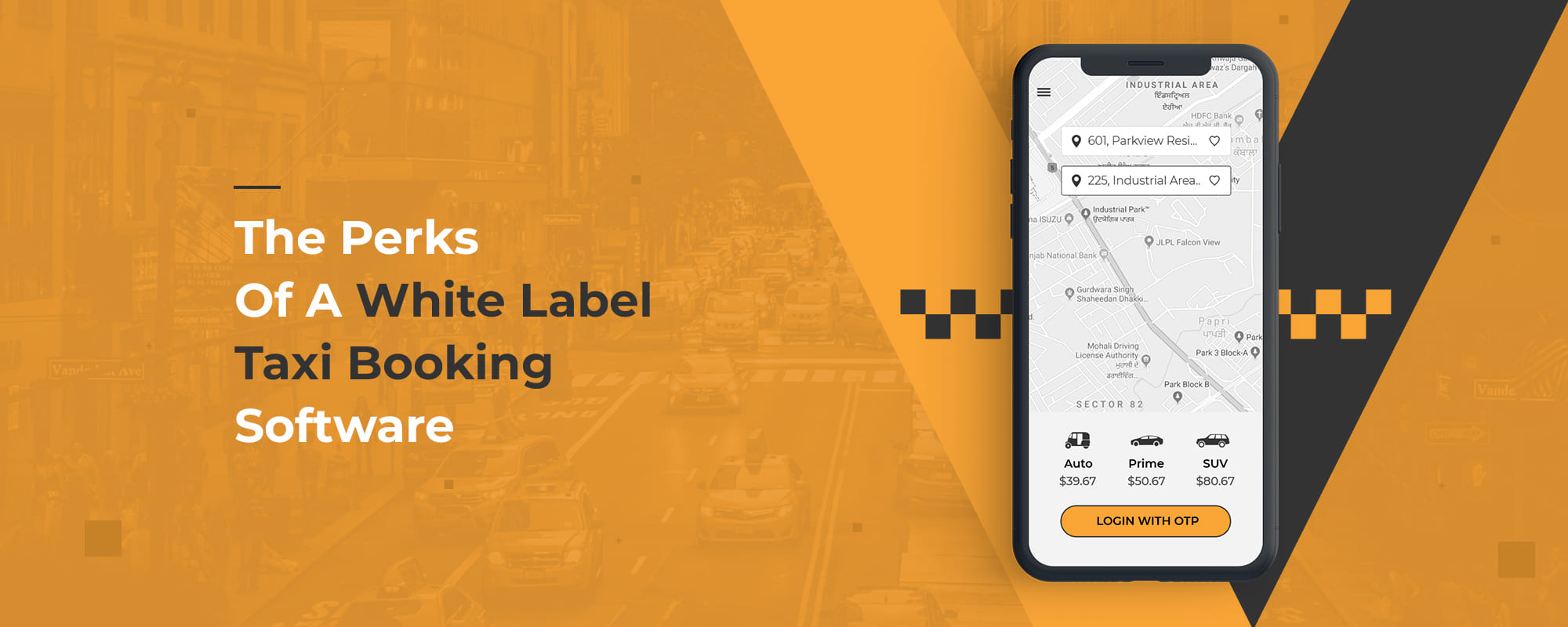Last Updated: 23rd Feb, 2024
Despite Uber owning the lion’s share of the online taxi-booking app market, there’s no shortage of new businesses vying to get their name slotted somewhere in the list of notable online taxi booking companies. The reasons for this gold-rush-like scenario in the online taxi booking industry range from growing internet usage, millennials’ changing lifestyle, and the hassle-free booking done through modern mobile apps.
But gaining a firm footing in the online taxi booking industry isn’t all that simple. You need to offer something among the likes of Uber, Lyft, or Grab to gain visibility and even with that, it’s not certain that your mobile apps will sell. Why? The online taxi booking market has already undergone a paradigm shift with the advent of Uber and disruptions even in today’s time are like a flash in the pan. Moreover, building an Uber-like app from scratch isn’t all that easy considering the time and monetary investment that goes into it. So, what should be the approach for aspiring entrepreneurs to build their own taxi-booking mobile app?
White-Label Taxi Booking Software – A Sensible Approach
Whenever you’re building a mobile app to be used by masses, time is of the essence. A slackened pace in finishing the development or arriving late to the launch date can prove costly if your competitors get their mobile apps rolling out in the nick of time. It’s a known fact that custom development is complex and often a lengthy process and it’s not in every businesses’ interest to go down this route.
That’s where white-label or off-the-shelf solutions come in handy. But what really is a white-label solution? Well, in simple terms it’s a software developed by one company, rebranded and then sold to another company. When it comes to software, it’s basically a redesigned and slightly customized build to incorporate the purchasing businesses’ branding.
How Are White Label Solutions Built?
- One common way to build a white-label solution is by using the backend codebase but with visible changes in the frontend of the app, giving a much different look and feel to match the buyer’s branding.
- The other way is by creating a multi-tenant app; in this way, each app instance remains the same but each tenant can experience a different set of features. It’s a mechanism applied in software as a service(SAAS) platforms, which are a lot more complex to build and maintain.
Key Elements of a White Label Taxi Booking Software
A white label taxi booking software consists of the following three key elements:
Passenger/Rider App
A white label passenger app offers enough functionality to facilitate ride-booking for riders with utmost convenience. Users simply install the app on their device and register on the taxi-booking platform using their phone number. With registration complete, riders can search for cabs by specifying their pick up and destination points. Riders are shown an estimated fare before creating a request. The request is populated to nearby drivers and riders have to wait until some driver accepts their request.
Riders are kept informed about the process via on-screen notifications. Upon a ride-booking, riders receive an update with the driver’s name, vehicle number, address, contact, and rating. Moreover, riders can start tracking the real-time location of the driver as he/she makes their way to the pick-up point. Riders can call the driver to get any other updates. Before starting the ride, the rider has to share an OTP to validate the booking. Any of the in-app payment methods or cash can be used to make the payment. Finally, when the trip ends, riders can share their rating of the driver based on their experience.
Driver App
A white label driver app allows drivers to register themselves on the platform using their driver’s license and other identity documents. The app works on the opposite end of the passenger app for receiving ride requests. Drivers get real-time notifications for ride requests, which they can accept/reject. In case of a rejection, the request is routed to the next driver in the queue. The app contains GPS functionality to facilitate navigation for drivers. Drivers are shown multiple routes with traffic/distance/estimated time to reach the pick-up point.
The drivers can easily set their availability from online to offline or vice-versa from within the app. Once the drivers complete a trip, the fare details are displayed on both the passenger and driver app. Drivers also get to leave a rating or review of the passenger, which helps the platform keep track of the people that use the platform. Finally, the app also lets the drivers see their overall earnings.
Admin Panel
An admin panel is the ‘main controller’ from where the admin can manage all sorts of fleet-operations in real-time. It allows the admin to monitor all the driver’s activities in real-time, respond and resolve customer queries, and more. An admin panel also provides crucial reports and analytics data related to the number of bookings and earning. The reports or data derived is vital when making important business decisions or policies.
Key Features to Have in a White-Label Taxi Booking Solution?
As highlighted earlier, white-label taxi booking software is usually offered in packages consisting of separate driver, rider apps along with an Admin panel. Following are some of the key features that one should look for:

Google Maps Integration
Google Maps integration is quite the most reliable way to offer an improved customer and driver experience on a ride-sharing platform. From turn-by-turn navigation, lane level guidance, route overviews, voice support, and real-time traffic updates, Google Maps covers everything.
Web Admin Panel
An admin panel, which is usually a desktop web application, helps keep tabs on every passenger or driver’s activities in the app. It offers a brief summary of all processes and helps the owner manage routes and finances. It Includes a dashboard, driver and passenger management, payment management and reports, and analytics.
Support for Major Payment Gateways
Payment gateways are used by merchants to accept electronic payments and process debit or credit cards. It’s a good idea to have support for multiple and secure payment gateways that are Payment Card Industry Data Security Standard (PCI DSS) compliant, which a security standard created in 2004 by the world’s four biggest card associations – Visa, MasterCard, American Express and Discover.
Booking History
This feature keeps a record of all the users registered on the ride-sharing platform and displays their feedback and booking history. It’s certainly useful in helping users find their past trips and know how long they’ve been using the platform.
Digital Wallet
As well as supporting credit/debit card payment methods, a ride-sharing app should offer its own digital wallet for ultra-quick payments. The wallet can be set to require one-time user authentication, after which users should be able to recharge via Credit/Debit and Net Banking.
SOS For Driver/Rider Safety
An SOS feature as one offered by VivoCabs – a white label taxi booking software is vitally important from the viewpoint of driver/rider’s safety. It allows users to send an SMS to their pre-saved emergency contacts with a single tap.
Front-end Customization
A white label taxi booking software should enable front-end design customization. This way the owner can brand the software in his business’ image, and make the much-needed thematic and logo changes.
Scalability For Growing Demands
It’s crucial that a white-label taxi booking software is highly scalable to meet a business’ growing demands. This way, the business owner can continue to use the same platform for his extensive operations without the need to migrate to a different platform.
Most Common Business Models For White-Label Taxi Software
Subscription-based business models are most common among developers of Saas products. Under this model, the fee is charged in two stages – initially as a set-up fee and then a recurring monthly fee which is calculated on the basis of drivers registered with the app.
But not all white-label software have recurring monthly fees. VivoCabs – white-label taxi booking software can be purchased for just $999 for a lifetime license.
Revenue Generation Model
A basic white label taxi booking software should support the following two channels of revenue generation:
Commission
The platform owner can deduct commission for every confirmed booking. Drivers are charged when they accept a ride and riders pay a flat booking fee when making a payment. The commission rates tend to vary but anything between 20-25% of the total ride cost is quite standard in the taxi booking services. There can further be a cancellation fee charged from the riders if they happen to cancel their booked rides.
Surge Pricing
Surge pricing is a type of dynamic pricing where the cost of a ride increases based on demand. Peak hours or rainy days tend to create an increased demand for cabs and this is when the ride-cost can go up for the riders.
Major Benefits of White-label Taxi Booking Software?
Speed to Market
Right off the bat, the main advantage that white-label solutions offer is speed to market. The classic example would be an existing offline taxi business with a sizable fleet that wants to start offering mobile apps to gain a competitive edge in the market. With on-demand services becoming all the rage, it’s a reasonable supposition that taxi drivers and users would both benefit from the availability of mobile apps. But between the app idea and the app reality, there’s a huge gulf(planning, designing, development, testing & deployment)that can take months to even out. Not every business is prepared to wait this long to get their mobile apps ready and that’s where white-label taxi booking software proves useful.
Low Upfront Investment
Building an online taxi booking mobile app off scratch involves major capital investment. Initially, you’d hire the services of a business analyst to understand how your service can/would work. After that, you’ll have to work with a professional designer to capture your business’ identity in the product. Not every entrepreneur has the necessary funds to carry out these operations.
It’s not a surprise then to see many companies opt for a white-label software which gives speed to market at a much lower upfront investment. Furthermore, white-label apps are highly customizable so the business doesn’t lose out on maintaining its brand image.
Post-launch Support
Custom app development of a taxi booking mobile app is a costly affair. From selecting a server, adding support for the application once it’s deployed, optimizing the code, and ensuring the operations run smoothly, a dedicated team of developers or system administrators is needed. For most startup ride-hailing businesses with limited budgets, this approach isn’t always viable. On the other hand, white-label Taxi booking software comes with a minimum of one-year post-development support for any technical issues. This is both an affordable and convenient way to gain entry and sustain an online taxi booking business.
Risk Mitigation
As mentioned earlier, white-label solutions don’t involve huge capital investment. They’re ready to be used with minimum customization and rebranding. Compare that with custom taxi booking app development which can take months and 10x or more development cost. On top of that, there’s no guarantee of how mobile apps would fare in the real world. In contrast, a white-label software is already deployed in the real world by one or the other taxi app business.
Questions To Ask The White-Label Service Provider
There are plenty of taxi booking app development companies but not all of them are built the same way. Businesses should look to perform their own research about the solution-provider to minimize their risk of making a bad purchase. Initially, this could be done through online forums, communities, existing user’s reviews and testimonials, and so on. Moving on, it’s crucial to understand the solution provider’s policies with regards to the maintenance, data recovery, security, and updates. Some of the questions based on these two chief aspects of white-label software could be:
Maintenance & Data Recovery
- How will the developer export/import data to/from the server or database?
- Does the developer guarantee data backup. If yes, what’s the process behind it?
- What kind of disaster recovery support is offered by the developer in the event of a hardware failure?
Security & Maintenance
- Is the white-label software compliant with the critical security requirements of the transport industry?
- What kind of software tests are performed by the developer and their frequency?
- What updates are offered by the developer and their frequency?
Conclusion
With exciting benefits in the form of affordable prices, speed to market, and post-development support, it’s fair to say that white-label solutions are an ideal way to kick-start an online taxi booking app business. Since these solutions are both customizable and scalable, they allow businesses to progress at their own pace and meet their growing demands with relative ease. If you’re interested in a white-label software to build a taxi booking app for your business, do check VivoCabs – a FATbit owned taxi booking app solution.
Invest In a customizable and scalable solution like VivoCabs


